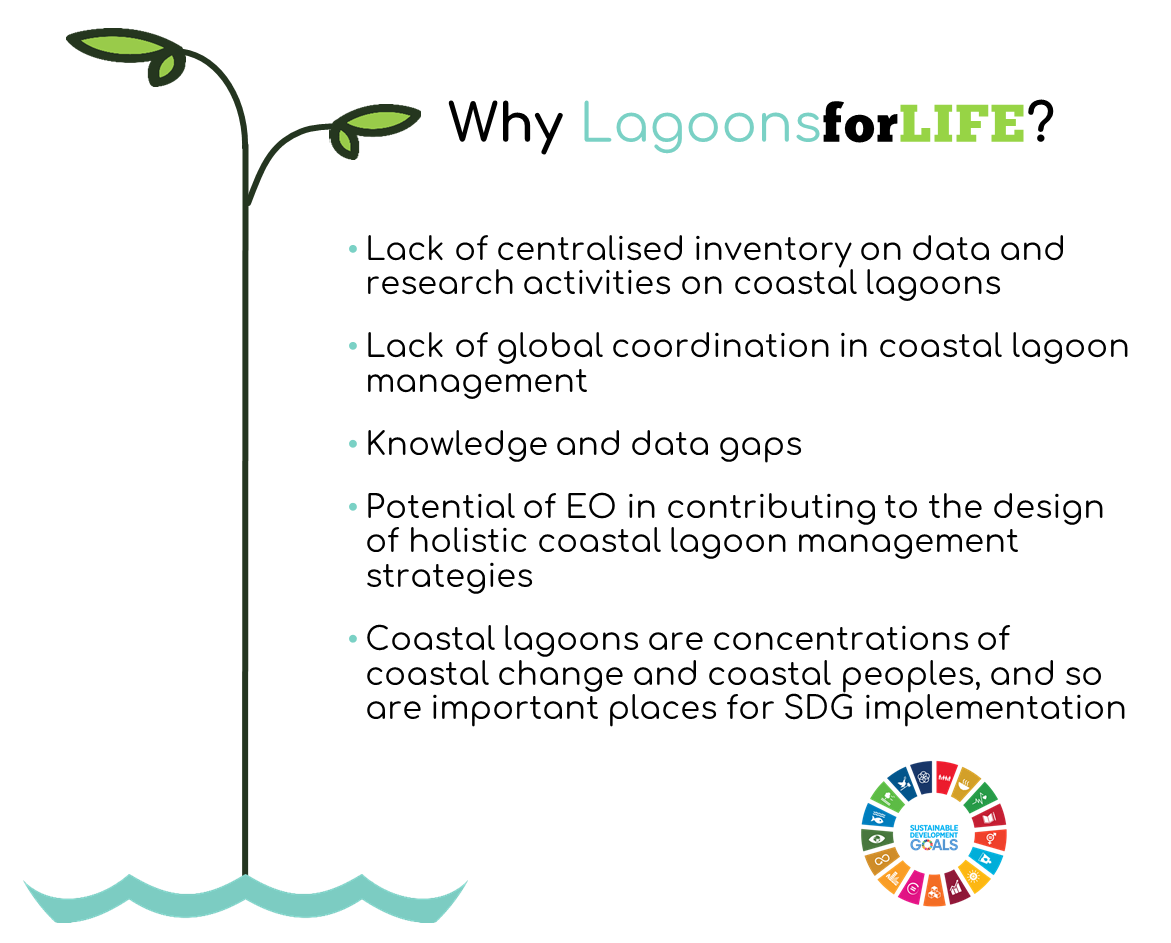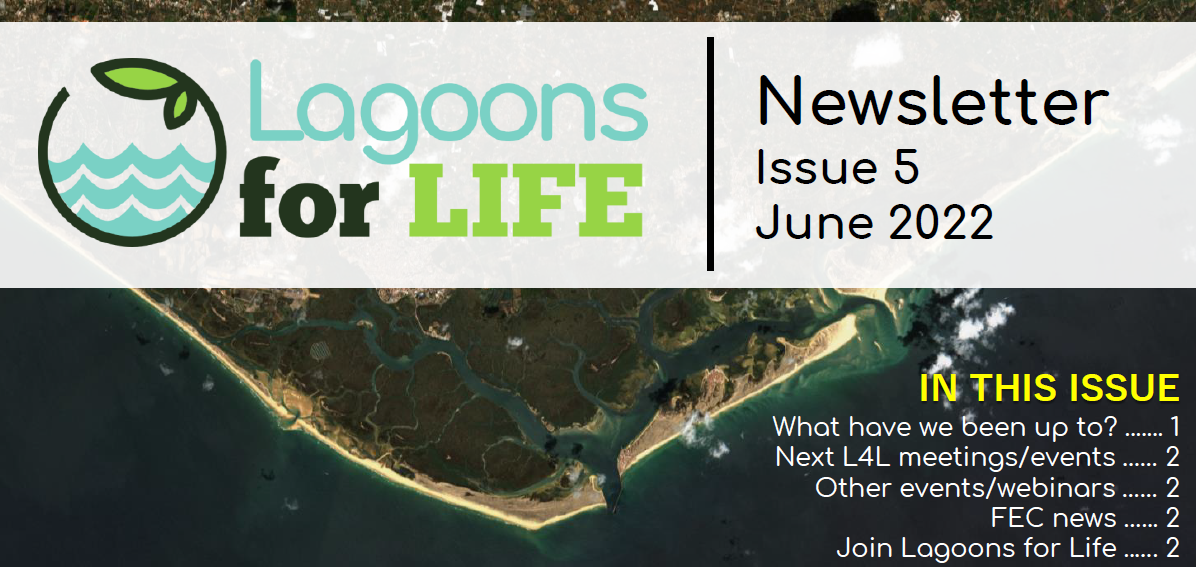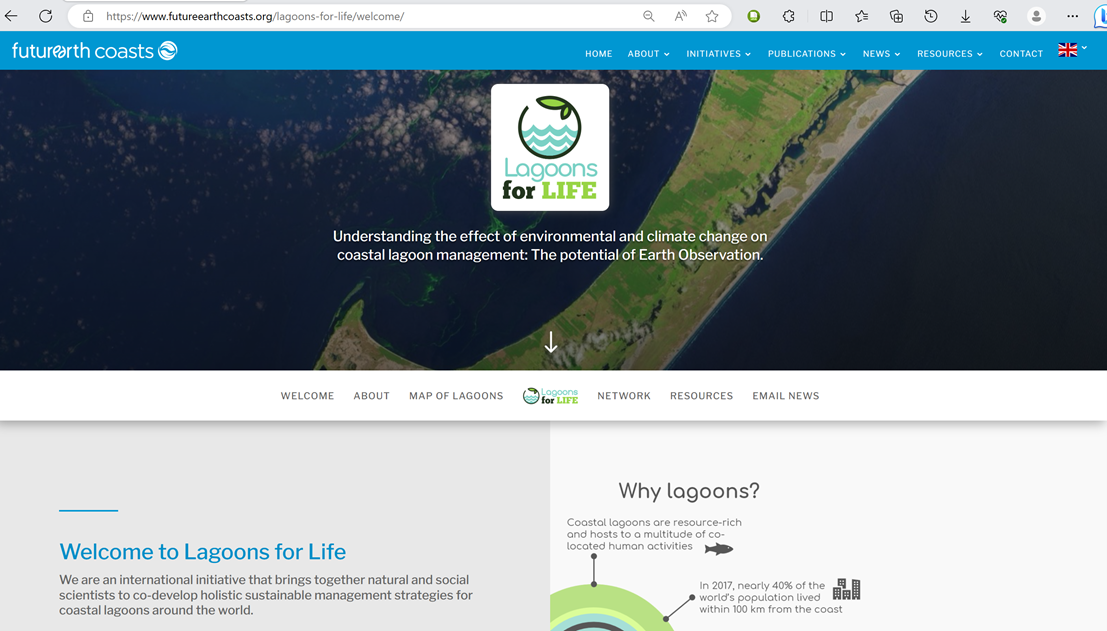About Us
What are coastal lagoons and why are they important?
Coastal lagoons are water bodies found along the coastline and are separated from the open sea by spits and sediment barriers with limited points of water exchange. “According to a classification by Kjerfve (1986), there are three types of coastal lagoons based on the number of entrance channels (inlets) and, thus, the degree of water exchange with the ocean: (a) choked, (b) restricted, and (c) leaky.
Choked lagoons have only one inlet, which restricts the influence of tidal currents and water level fluctuations in the lagoon. They can be either parallel to the shore or, when associated with river deltas, at a right angle to the shore. Restricted lagoons have two or more inlets and a well-defined tidal circulation, whilst leaky lagoons exhibit numerous inlets and are the most influenced by tidal currents in all three lagoon types. Both restricted and leaky are most usually oriented parallel to the shore.” (Source: Politi et al., 2016)
Importance of Coastal Lagoons
Coastal lagoons are biodiversity rich and provide several ecosystem services, such as fisheries, aquaculture, storm protection and tourism (e.g. Newton et al., 2014, Rova et al., 2015, Sousa et al., 2016), and as a result they are hotspots of human settlement and activities.
Multifactor impacts on coastal lagoons
Lying at the intersection between land and the ocean, coastal lagoons are influenced by both terrestrial and aquatic processes. Sea level rise already threatens shallow coastal lagoons such as the Venice Lagoon (UNESCO, 2011) and the multiple pressures and drivers of change in lagoons often have direct implications for societal well-being (Newton et al., 2014).
Such dynamic systems are highly sensitive to environmental and climate change, but our understanding of how lagoons respond to change globally is limited.
Improve our understanding for better management
Improving our understanding of how coastal lagoons respond to change at local, regional and global scales is necessary to:
- Sustainably manage coastal lagoons,
- Sustainable manage the ecosystem services they provide, and
- Assess the socio-environmental implications of future development on coastal lagoons (Abigail et al., 2009).
The role of Lagoons for Life
Having recognised a data and knowledge gap in the systematic study of coastal lagoons, Lagoons for Life aims to approach coastal lagoon systems holistically, by integrating environmental, social and economic datasets from multiple sources.
Through linking with international experts, stakeholders, researchers and scientists, Lagoons for Life aims to co-design coastal lagoon management strategies that address current and future issues in coastal lagoon ecosystems and their ecosystem services.

Lagoons for Life News
6th L4L Newsletter (Jan 2024)
Our 6th Newsletter is ready! Since our Newsletter Issue 5 (June 2022), L4L have been actively involved in the H2020...
Future Earth Coasts Lagoons for Life Working Group Successfully Migrates Website to the official FEC website
In a significant move to streamline access to valuable research and resources, the Future Earth Coasts Lagoons for...
FEC Workshop on Assessing the Sustainability of Coastal Lagoons (Gdynia, Poland – June 22, 2023)
The Future Earth Coasts (FEC) Workshop on the Assessment of Coastal Lagoons and Their Sustainability took place on...



